
On SEEING, A Journal. #534
July 18, 2023
The SHAPE of the NFL, Part One: OFFENSE
I am compelled – and propelled – by projects.
During the past 30+ years, I have worked on well over 50 different projects. Some held my interest only a short time and were left, abandoned. It happens: interests, passions, strivings, are often in flux. Many stayed “alive” as my interests grew and drove them to a wide range of experiments and discoveries. About twenty “projects” have been published as books.
One of the major projects currently filling my time and brain is “The Shape of the NFL.” The nature and nurture of an athlete’s body to “fit” a sport’s physical requirements fascinates me. This project is about the significant differences among the body types of professional football players and how those differences play out in each position.
For example: NFL linemen are huge human beings, usually 300 lbs and more, whereas, in significant contrast, running backs are built like tanks to run with speed and power.
Contrasting body type and size between an offensive lineman and running back
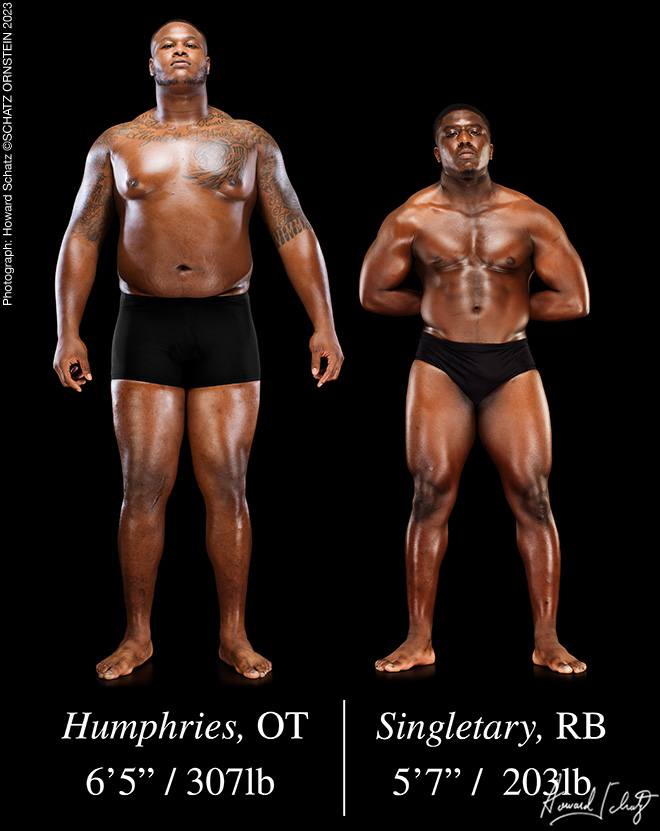
Contrasting body type and size between an offensive lineman and wide receiver
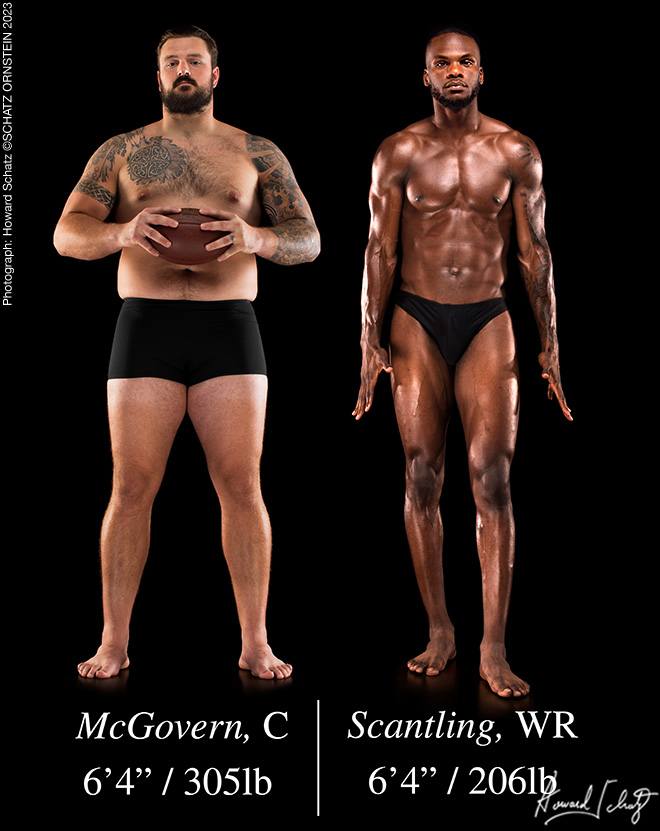
I have been fortunate to enlist the expertise of Linus Schneider (the son of our producer, Bryna Levin), a Senior at Bard College in New York City with an interest in sports journalism and a passion for football. Linus’ expertise on the NFL and its players has been immensely helpful in our quest to identify the very best players.
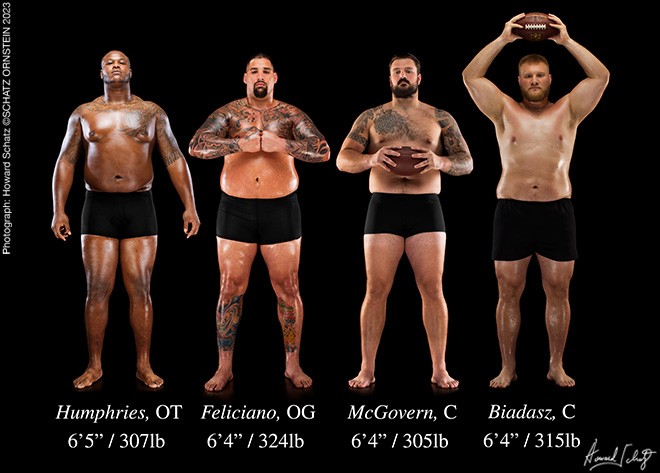
The Offensive line is made up of center, guards, and tackles, who are typically the largest players on the field. Sumo-sized and often weighing an average of around 315 pounds, their main responsibilities are protecting the quarterback from the onslaught of defensive players and creating gaps for running backs.
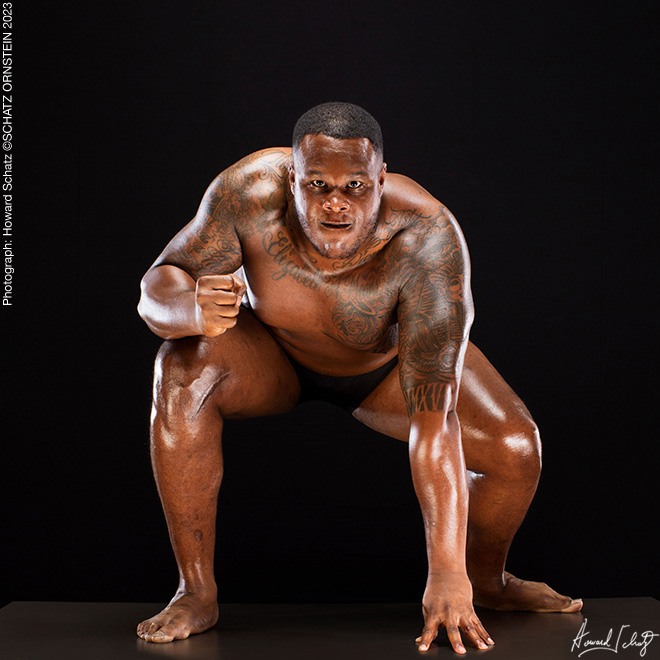
DJ Humphries, Offensive tackle, lining up
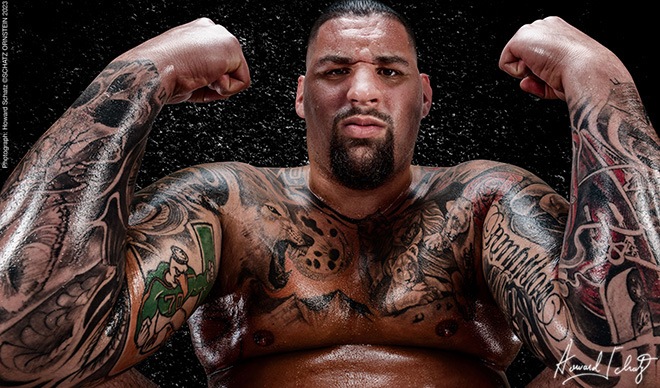
Jon Feliciano, Offensive guard
Offensive linemen need speed, footwork, and agility, often counter-intuitive for their size, to successfully protect their teammates and help get the ball downfield.
Quarterbacks use a variety of strategies to lead an effective offense. Rapid decision-making and grace under pressure are paramount requirements.
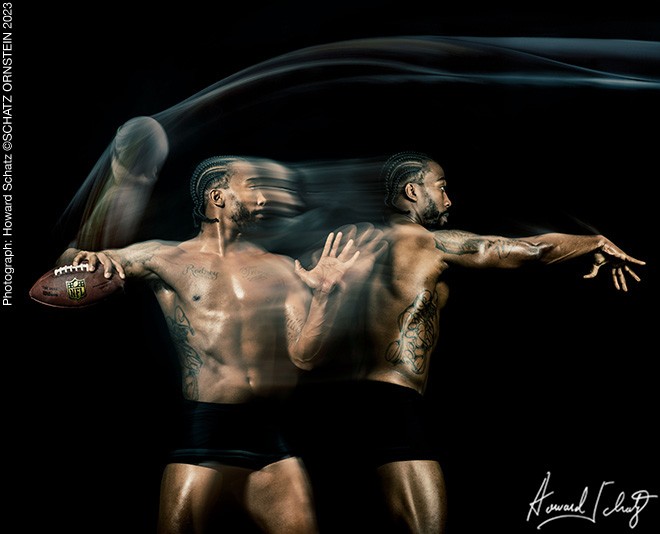
Tyrod Taylor, Quarterback
An NFL quarterback must also actively know and recognize dozens of plays, including the routes of the receivers, and be able to read the defense for potential threats. Despite the immense strength required to be an NFL quarterback, it is also a highly cerebral position necessitating considerable mental fortitude.
Running backs catch passes, block and run.
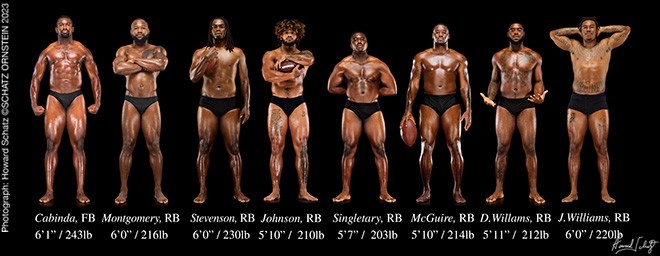
Fullback and Running backs
Though they have a variety of body types they all rely on incredible speed, power, balance and creatively spontaneous changes of direction. Lining up alongside the running backs are the fullbacks (Jason Cabinda, on the left), whose main function is more blocking than rushing. They are generally stronger and built to block effectively.
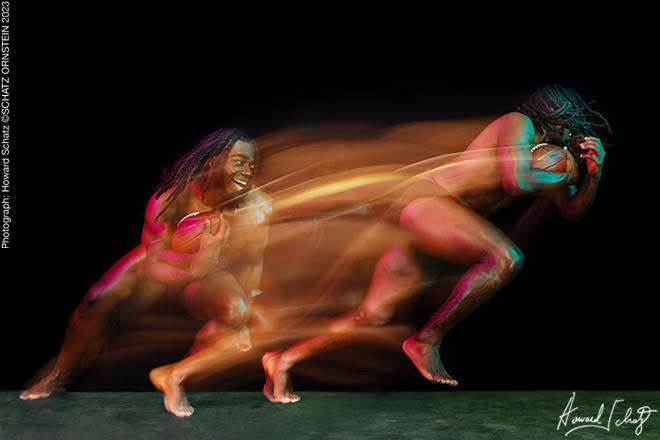
Rhamondre Stevenson, Running back. A juke, an acute, explosive change of direction.
Wide receivers are typically some of the fastest and most agile players on the field.
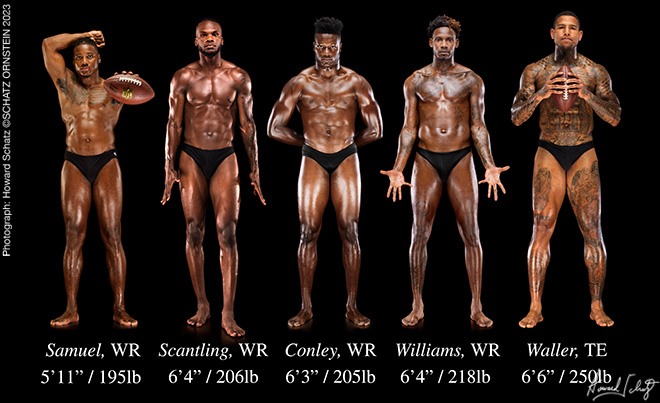
The main job of a wide receiver is to create separation from defensive backs and catch passes thrown to them. They run precise routes and make quick, elusive cuts while tracking the ball in the air and avoiding defenders.
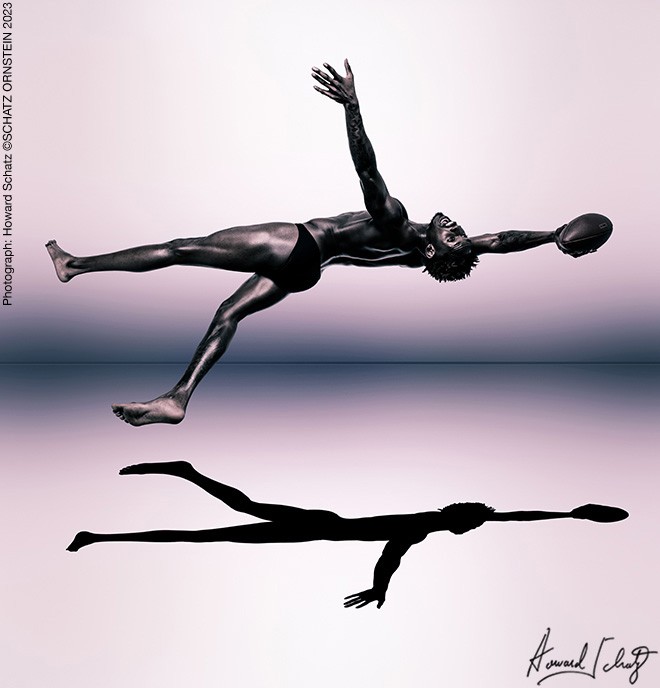
Preston Williams, Wide Receiver
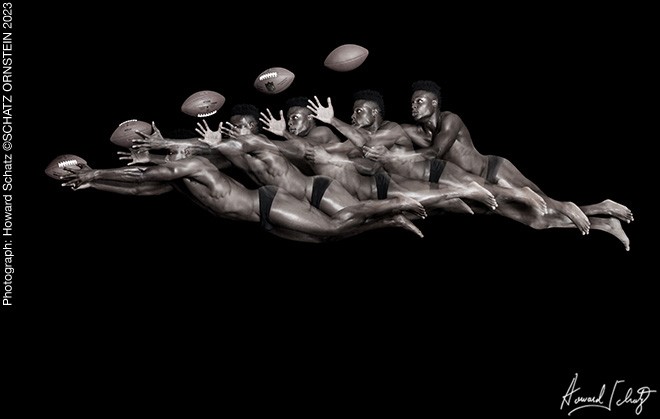
Chris Conley, Wide receiver
Once the ball is caught wide receivers often shine in the open field using their speed and elusiveness to gain extra yards after the catch.
Tight ends can be lethal pass catchers and are usually larger than wide receivers as they are frequently called upon to help block along side the offensive line. This requires the size and strength to match up with massive defensive linemen, while simultaneously being quick enough to outrun defenders and get open for a pass.
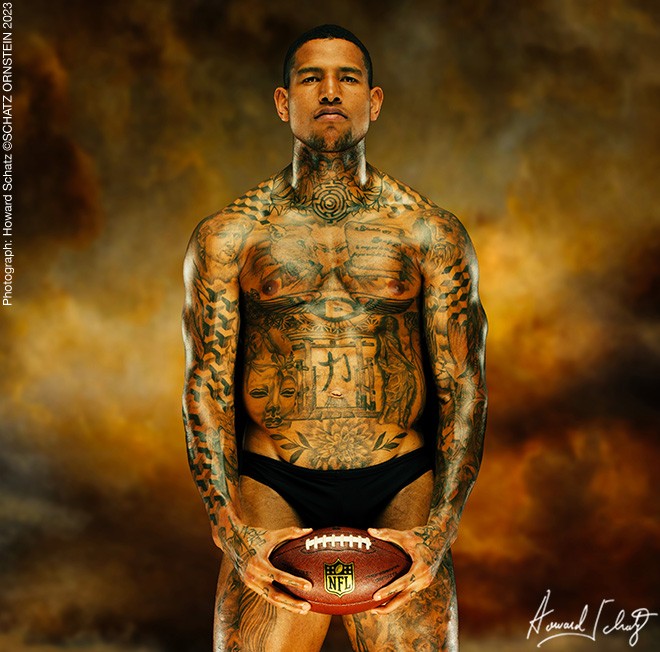
Darren Waller, Tight End
Highly specialized positions on the team are the punter and kicker.

Jamie Gillan, Punter
A punter needs to be able to loft the ball in the air long enough for his teammates to arrive wherever it may land, and also kick it far enough to minimize the opposing team’s field position. The kicker is responsible for making field goals from as far as fifty yards out, and kick-offs launching the ball as many as 70 yards.

OFFENSE
The success of any project depends on many factors. One that is absolutely essential is access to the subjects, which often requires significant effort and diplomacy. Of all the projects I have done, access to top players in the National Football League has been the most challenging, by far.
Our hard-working and determined producer, Bryna Levin, has been unstinting in her effort to encourage and inspire top NFL players to participate in this project for inclusion in a future book and possible museum exhibition. In addition, images from the shoots are shared with each player for their personal use and social media.
